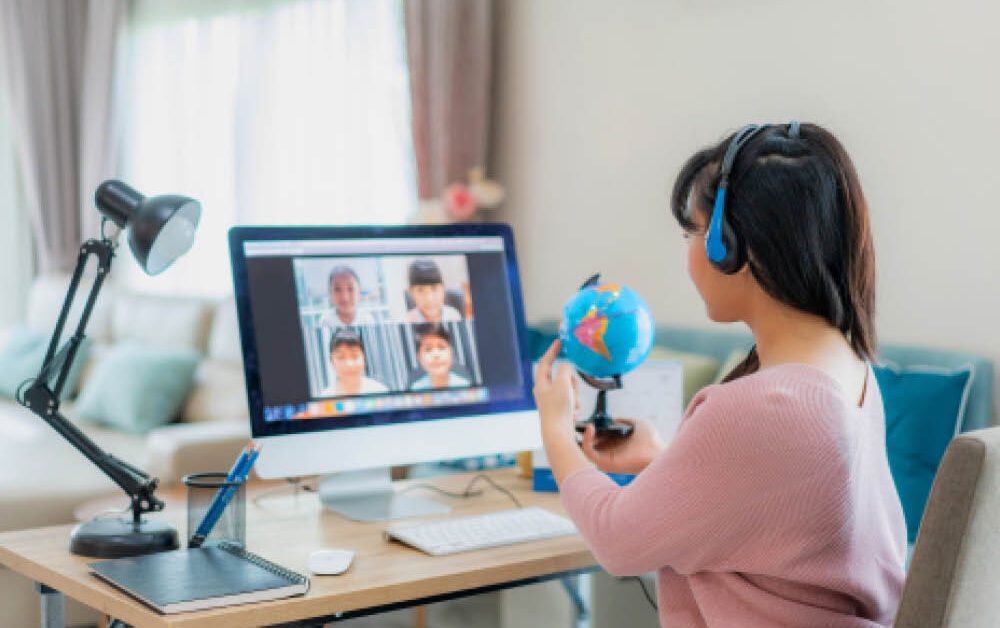
Recovery Spotlight: Signatures Salon
January 2021
Martin Luther King Day – Tips to Plan Your Celebration
January 2021by Kristian Bland
No one could ever say the COVID-19 pandemic has improved our lives, but at least technology has made dealing with the virus a bit more bearable. From enabling us to work from home to ordering curbside delivery and allowing our kids to enroll in virtual classrooms, the country in lockdown would look a lot different without our tech. “This year has shown us the emphasis that technology plays in our lives, from school to work and everything in between,” says Bruce Petry, CPA, President and General Manager, Cameron Communications, LLC. “Technology is in demand and has become a lifeline as our day-to-day lives take on a different shape.”
DISTANCE LEARNING
While whether or not school campuses are super spreaders is still a hotly debated topic, providing the option of distance learning has been a great help to many families. Of course, there are always problems. Keeping your kids focused and on task is always a challenge, and it’s strange how a tech-savvy child who could probably launch the space shuttle with their cell phone can suddenly become befuddled about how pressing the Submit button works whenever you check their grades and discover they haven’t been turning in assignments; but that’s just a little glimpse into the daily life of on-campus teachers. Consider it a shared experience and don’t let your kid sell you any lines. They know how to use their computers and tablets better than most parents when it comes to literally anything other than school, so they should be able to handle navigating their online coursework.
WORKING FROM HOME
Despite all the studies that have shown allowing employees to work remotely often results in increased productivity and high job satisfaction ratings, most businesses were previously reluctant to hop on board the tech train. However, the pandemic forced their hands, and now that the positive benefits have been made clear, it might be difficult to go back to the daily grind of commuting to the office. Working remotely often involves employees setting their own pace without direct managerial oversight, which can be great for some people while others need the structure that strict supervision provides. You can also show up to work without suffering through rush hour traffic and no one’s going to mind if you wear your slippers during the daily team meeting. That’s not to say there aren’t downsides to working from home, though. It’s very easy to fall into the trap of work-from-home becoming always-at-work, which can quickly lead to employee burnout.
CURBSIDE DELIVERY
Many people find the act of shopping to be a calming, almost meditative experience of finding joy as they wander through the aisles and fill their carts. For others, the grocery store is a nightmare landscape of long checkout lines, annoying customers, and always getting that one cart with the squirrely wheel. Fortunately for the latter group, the pandemic accelerated the deployment of curbside delivery options at most major grocery stores and retailers. When you think about it, scrolling through your shopping list online and then driving to the store to have it delivered to your car combines the best of online shopping and same-day delivery.
VIDEO CONFERENCES
A large part of working from home, distance learning, or simply staying in touch with friends and family during the pandemic has involved video conferencing. From Zoom to Microsoft Teams and FaceTime, most of us have spent more time staring at postage-stamp-sized videos of our co-workers than we ever did seeing them in person. One reaction to everyone suddenly working from home was an increase in team meetings so managers could keep up with their teams progress, and they’re something we’re all probably tired of. Still, they beat the hours-long in-person conferences where they bring in the deli platter just as you were getting excited to break for lunch.
If the pandemic had happened just a few years ago, much of the technology we’ve come to rely on today wouldn’t have existed. Working from home wouldn’t have been an option, video conferencing was still slow and in its infancy, and distance learning was a pipe dream of school district IT departments across the country. “We provide services – phone, digital cable and high-speed internet – that keep our customers safely together and connected,” Petry says. As time goes on and we continue fighting the virus, technology will only become more important to our daily lives.






